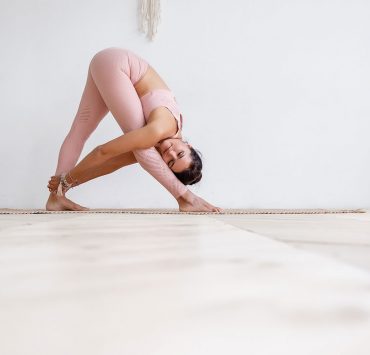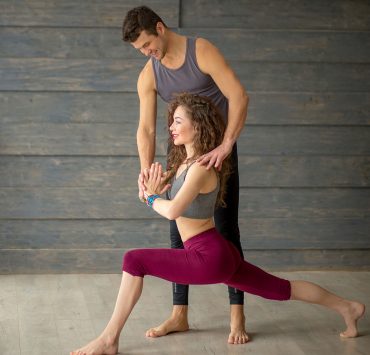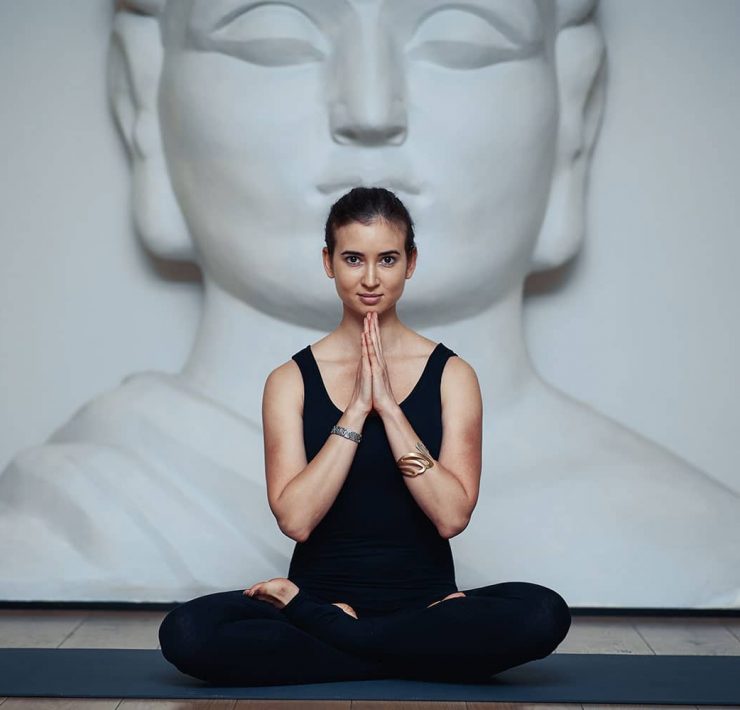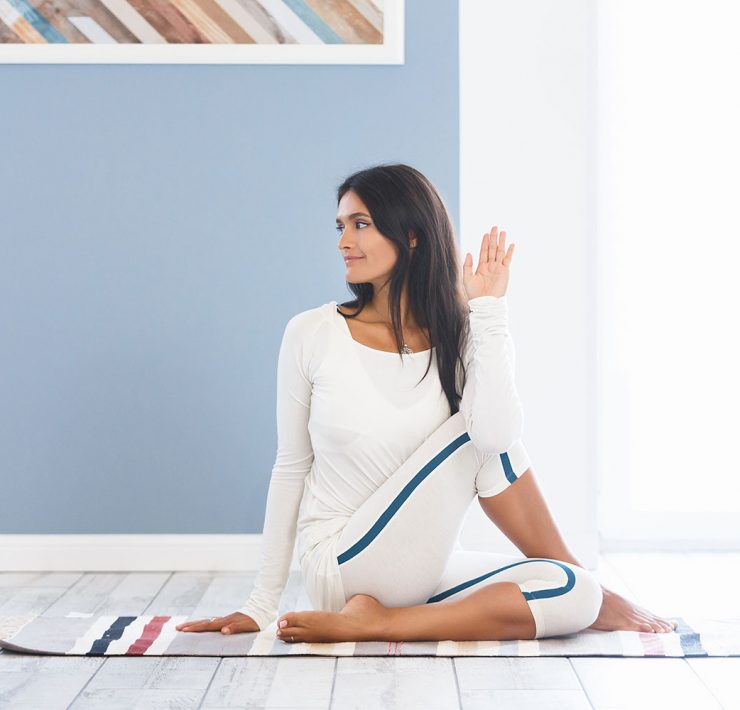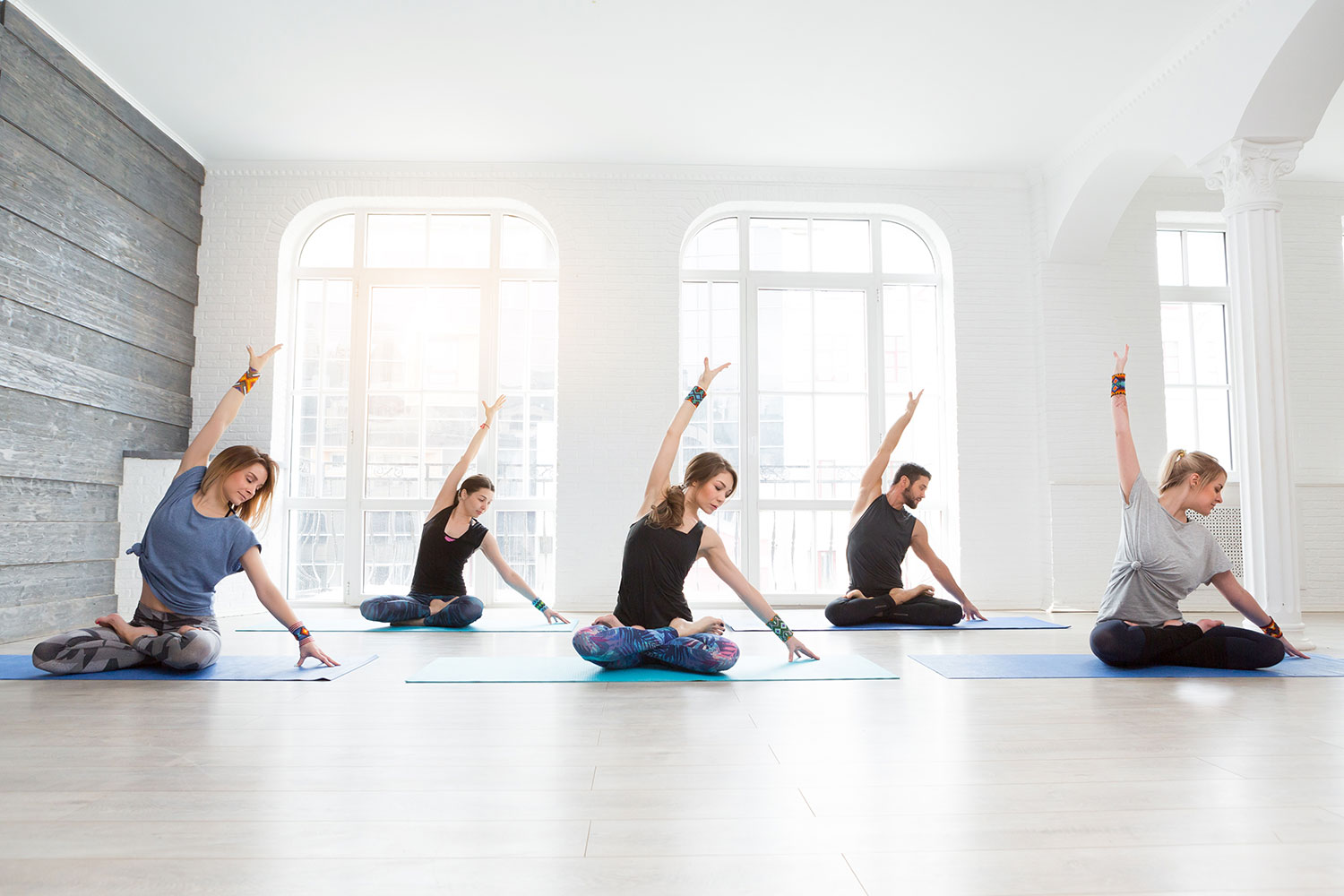
After spending nearly two decades as a relationship therapist, Patricia…
Yoga is intended to be a safe environment for growth and increased self-awareness, free of judgment and criticism. The cues provided by teachers should empower students to expand upon their unique strengths while honoring where physical limitations lie. Keeping the communication between teachers and students direct and relatable is imperative to the vibe of the class. Prompts should be understandable and all-encompassing to make sure everyone feels valued and supported. Below are 15 cues to effectively encourage creativity and self-expression in a safe space.
Move Toward The Sensation Instead Of Away From It

It’s in our nature as humans to shy away from the sensations that surpass our preconceived restrictions on intensity. The language of the body is something we feel, so it’s vital that we listen to what it has to say. Using this wisdom will enable us to identify when it’s appropriate to move further into the sensation, and when the body has reached its limit. Yoga encourages us to find our edge in each posture, embracing the space between control and surrender. Finding the general shape of a pose is only half the battle, you’ve got to surrender to the form and feel it all.
Stack The Body
Often the most empowering cues a teacher can deliver to students involve some level of safety regarding proper alignment. It’s hard to dive into practice wholeheartedly when you’re continuously wondering if you’re ‘doing it right.’ In many cases, one can rely on the better judgment of the body to deduce whether a pose feels right or not, but this isn’t always the case. Stacking the body refers to a system of support that starts from the ground up and creates a stable foundation for expansion. The action of appropriately building the framework for different postures empowers students to feel how each shape translates into different areas of the body and how subtle changes play a huge role.
Let The Eyes Shut Down

If you’re having trouble tuning in and feeling the poses completely, it could be other senses getting in the way. Taking the mind away from sensory distractions isn’t easy, but it will give you the chance to immerse in your practice fully. Letting the eyes shut down provides a more internal experience while giving them a break from constant stimulation and potential strain. In restorative shapes, this action calms the mind and allows thoughts to stay within. In more active or balancing postures, you can expect an added challenge by closing the eyes which excites growth and trust in your practice.
Explore What Feels Best Today
What felt good yesterday may not feel so good today, and that’s totally normal. Respecting the variation and ever-changing nature of our being is essential when practicing in a way that honors where we’re at physically and mentally. Beyond listening inward, this level of awareness involves holding value over our limitations as they fluctuate and moving with a sense of patience. Encourage students to notice how they’re doing today and flow from a space that best serves the body and mind in the moment.
Never Compromise The Integrity Of The Breath

Yoga emphasizes the connection between movement and breath, addressing how they work together to create harmony in body and clarity in mind. We employ the breath as a tool for expanding and surrendering into different shapes, allowing our awareness to travel deeper into the practice. It’s important to stay cognizant of the sound, quality, and texture of our breathing as we move between shapes. Notice the effect that both restorative and more advanced postures have on the breath. When we challenge our body physically, it’s common to lose sight of maintaining balanced inhales and exhales. Wherever your practice guides you, be mindful of your ability to take a deep inhalation and modify if necessary.
Trust That You Are Exactly Where You Need To Be
This cue empowers students to let go of comparison and judgment, embracing the current reality of their yoga journey. It’s not easy to become detached from expectations when you’re surrounded by other yogis who may be at a different place in their practice. This feeling of inadequacy is what deters many from accepting themselves exactly as they are and where they are. Encouraging students to enjoy the unfolding path of yoga brings appreciation to the abilities they already possess. It also brings attention away from the past or future and holds everything that matters in the present moment.
Find A Comfortable Place To Rest In Stillness

Savasana isn’t necessarily the best time for an abundance of cues, but guiding students to find the most relaxing modification for their body will enable them to absorb the benefits fully. It’s important for students to understand that they have options for this final resting posture. Offering a few variations gives the class a chance to branch away from what their neighbor’s doing and understand what promotes relaxation for them without intimidation.
How’s Your Inner Dialogue Going?
It’s inevitable that the mind will roam, but noticing where it’s gone is essential to understanding ourselves on a deeper level. Teachers may encourage students to detach from outside thoughts and bring all focus to what’s happening on the mat, but that’s quickly forgotten, and soon our attention is long gone again. This cue is a cheeky reminder to notice where your thoughts have run off to and gently draw them back. It’s not to shame students for having a restless subconscious, but more to discern where the mind goes when it wanders. From this awareness, we begin to watch thoughts pass like clouds in the sky, remaining free from attachment.
Feel Free To Find Child’s Pose At Any Time

When working to foster a loving relationship with the body, it’s crucial to honor when a break is needed. Without being cued into a resting position, students can feel uncomfortable doing something different from the rest of the class. Making child’s pose or savasana readily available at any time during class encourages individuals to respect their unique needs and rest when it feels appropriate. This choice creates a safe environment for personal growth and compassion that truly encompasses yogic teachings.
Customize Your Practice
Yoga is a highly personal experience, so it’s only natural for things to look entirely different over on your neighbors’ mat. The cues given by teachers are meant to direct students to the general foundation for a posture, but finding the right expression involves self-awareness on the student’s behalf. Upon introducing the class to the proper alignment of a pose, it welcomes a time where everyone can discover modifications or advancements that enhance their practice. This cue cultivates a light-hearted and creative space for students to express themselves.
Find The Line Of Energy

This cue can come off a bit abstract at first, but upon explanation, students will feel what it means. Balancing postures are a great time to implement this concept as they require attention to muscular engagement. In warrior III, you want to feel the line of energy running from the fingertips to the back foot. This perception activates and energizes the muscles along that path, resulting in a more stable and engaged expression. Foundation postures like downward dog also benefit from this cue, leading attention to the interconnected back line of fascia that supports the shape.
I Invite You To Try This

A kind way of drawing students to a particular pose is by expressing it in the form of an invitation. That way students can choose to accept or decline the offer, empowering them to do what’s best for themselves at all times. An appropriate time to use this cue is when moving to more advanced postures or any shapes that may make some students feel uneasy. Inviting them to either investigate or refrain from trying different positions makes sure everyone feels supported in their practice.
Create Space And Length
Yoga is a delicate dance between strength and flexibility, but when this union becomes unbalanced, we place ourselves at risk for injury. Too much strength without flexibility can lead to tightness in the muscles, and too much flexibility without strength can result in hypermobility. This is where length and space come into play, prompting students to explore expansiveness in each posture. Finding length and space in the body brings focus away from efforts to be as bendy as possible and into the wholeness each shape offers.
Root Down To Rise Up

Feeling grounded is an important aspect of yoga, but there’s also an uplifting element that makes this cue so relatable in many postures. We root down through the base, or whatever part of us connects to the ground, and rise up from that root to expand and create space. This idea encourages yogis to find the areas that offer support and build upon that stability to explore growth. Tree pose is a beautiful example of this concept; the balancing leg grounds down and establishes supportive roots from which the upper body stems to blossom.
Release
It’s not uncommon for tension to creep into our yoga practice, but cueing students to recognize where they’re holding stress can help relax the body. Releasing into a pose involves noticing any displaced tension in the body as a result of increased effort. When we approach a shape that challenges the legs, see if you’ve carried strain to the muscles surrounding the face or neck as a result. Encouraging students to let go and deeply surrender into shapes grants the possibility to examine stored tension in the stillness and release it from there.
What's Your Reaction?
After spending nearly two decades as a relationship therapist, Patricia journeyed down the path of writing as a vehicle for sharing her wisdom. Her work reflects a sincere interest in readers’ wellbeing and is abundant with helpful advice and fascinating insight.






